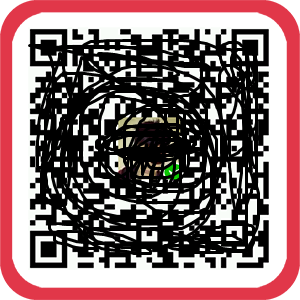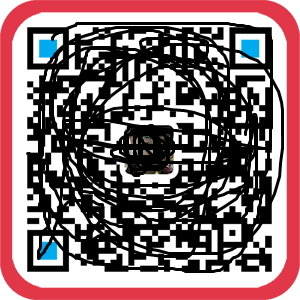
如come, go ,leave,fly,arrive,move,start,begin,return等。
现 在进行时是英语的一种时态,表示现 在进行的动作或存在的状态。现 在进行时表示动作发生的时间是“现 在”,动作的状态是“正在进行中”。在英语时态中,“时“指动作发生的时间,”态“指动作的样子和状态。
注意
并不是所有动词都有进行时,一些动词一般在句中不能用现 在进行时态,而应用一般现 在时。这些动词往往是等表示情感状态、知觉认识、愿望或短暂性的动词。例如:see(明白),know(知道;了解),want(需要;想要),like(喜欢),hear,think(想;认为),hope,hate 等。
1、一般现在时:概念:经常、反复发生的动作或行为及现在的某种状况。
标志性时间状语:
Always(总是), usually(通常), often(经常), sometimes(有时候), every week (day, year, month…), once a week, on Sundays ……
基本结构:当主语是第三人称单数时 当主语不是第三人称单数时;
肯定句 主语+动词单三+其他 肯定句主语+动词原形+其他;
否定句 主语+doesn’t+动词原形+其他 否定句主语+don’t+动词原形+其他;
一般疑问句 Does+主语+动词原形+其他 一般疑问句 Do+主语+动词原形+其他;
肯定回答 Yes,主语+does 肯定回答 Yes,主语+do;
否定回答 No,主语+doesn’t 否定回答 No,主语+don’t;
特殊疑问句 特殊疑问词(when,where,who,how ,etc)+一般疑问句
例句: I never get up early on Sundays
2、一般过去时:
概念:过去某个时间里发生的动作或状态;过去习惯性、经常性的动作、行为。
标志性时间状语:ago, yesterday, the day before yesterday, last week(year, night, month…), in 1989, just now, at the age of 5, one day, long long ago, once upon a time……
基本结构:主语+动词过去式+其他;
否定形式did+not+do+其他;
一般疑问句did+主语+do+其他?
例句: I went to Italy I visited museums and sat in public gardens
3、现在进行时:
概念:表示现阶段或说话时正在进行的动作及行为。
标志性时间状语:now, at this time(在这一刻), these days……
基本结构:am/is/are+doing;
否定形式:am/is/are+not+doing;
一般疑问句:把be动词放于句首。
例句:He is practicing his guitar他正在练习他的吉他。
4、过去进行时:
概念:(1)表示过去某段时间或某一时刻正在发生或进行的行为或动作。
(2)表示一个动作正在进行时,另一个动作突然发生了。
标志性时间状语:at this time yesterday, at that time(在那一刻)或以when、while引导的谓语动词是一般过去时的时间状语等。
基本结构:was/were+doing;
否定形式:was/were + not + doing;
一般疑问句:把was或were放于句首。
While与when
(1)用while连接(while只接doing)
例:My mother was cooking while I was doing my homework(可以持续动作时态一致)
(2)when表示(when可以接doing或did,when后动作时间长,用doing,时间短,用did)
例:I was doing my homework when my mother came in(间接表达了具体时间)。
例句: I was having breakfast when the telephone rang。
5、现在完成时:
概念:过去发生或已经完成的动作对现在造成的影响或结果,或从过去已经开始,持续到现在的动作或状态。
标志性时间状语:recently, lately, since(自从)…,for(长达)…,in the past few years, etc
基本结构:主语+have/has+过去分词(done);
①肯定句:主语+have/has+过去分词+其他;
②否定句:主语+have/has+not+过去分词+其他
③一般疑问句:Have/Has+主语+过去分词+其他
④特殊疑问句:特殊疑问词或词组+一般疑问句(have/has+主语+过去分词+其他)?
例句: I have just received a letter from my brother
6、过去完成时:
概念:以过去某时间为标准,在此前发生的动作或行为,或在过去某动作之前完成的行为,即“过去的过去”。
标志性时间状语: after,when, as soon as(一就), until, before, by the end of(到…为止) last year(term, month…)……
基本结构:主语+had+过去分词(done);
①肯定句:主语+had+过去分词+其他;
②否定句:主语+had+not+过去分词+其他;
③一般疑问句:Had+主语+过去分词+其他
肯定回答:Yes,主语+had。
否定回答:No,主语+had not
例句: The children ran away after they had broken the window
As soon as the sun had set we returned to our hotel
I had not understood the problem until he explained it
7、一般将来时:
概念:表示将要发生的动作或存在的状态及打算、计划或准备做某事。
标志性时间状语:tomorrow, next day(week, month, year…),soon, in a few minutes, by…,the day after tomorrow……
基本结构:
①am/is/are/going to + do;
②will/shall + do
否定形式:①was/were + not; ②在行为动词前加didn’t,同时还原行为动词。
一般疑问句:①be放于句首;②will/shall提到句首。
例句: I will meet him at the harbour early in the morning
注:将来进行时will be doing 将来某时刻正在进行。
(用将来进行时提问更加客气,礼貌。能用will be doing 都能换成will do 表达。但语气、含义稍有不同)
例句: Tomorrow evening they will be singing at the workers’ Club
8、过去将来时:
概念:立足于过去某一时刻,从过去看将来,常用于宾语从句中。
标志性时间状语:the next day(morning, year…),the following month(week…),etc
基本结构:
①was/were/going to + do;
②would/should + do
否定形式:
①was/were/not + going to + do;
②would/should + not + do
一般疑问句:
①was或were放于句首;
②would/should 提到句首。
一般过去将来时常用在间接引语中。
特殊疑问句:特殊疑问词(when,where,who,how ,etc)+一般疑问句。
例句:She said that MrJones would see you now他说过琼斯先生现在要见你。
一般将来时表示将来某一时刻的发生动作或状态,
或将来某一段时间内经常的动作或状态。一般将来时由助动词 shall(第一人称),will(第二、三人称)+动词原形构成。will+V原
美国英语则不管什么人称,一律用will。 be going to形式可以在任何情况下使用。
shall 和 will 常常缩写成 ll ,紧接在主语之后。其否定式 shall not 和will not 的缩写式分别为 shan't 和 won't。
基本句型
肯定句:I/We shall/will go You/He/She/They Will go
否定句:I/We shall/will not go You/He/She/They Will not go
疑问句:Shall I/we go Will you/he/she/they go
简略回答:(肯)Yes,主语 shall/will (否) No,主语 shall/will not
特殊疑问句:一般将来时的特殊疑问句是将疑问词放在句首,后接一般疑问句(就主语提问时,以疑问词who开头的疑问词除外)
----- why will you be here on Sunday(周日你为什么将要在这儿?)
-----I will have a meeting on Sunday(我将要在周日举行一个聚会)
(对特殊疑问句要进行具体回答)
形式:●will 常简略为 'll,并与主语连写在一起,如:I'll,he'll,it'll,we'll,you'll,they'll。
●一般疑问句如用will you…?其简略答语须是Yes,I will或 No,I won't;如用 Shall I…?(较少见)其简略答语须是 Yes,I shall.或 No, I shall not.
进行时表将来,与瞬间动词连用。
一般将来时
一般将来时表示将来某个时间要发生的动作或存在的状态,也表示将来经常或反复发生的动作。常常与表示将来的时间状语连用。常用的表达形式共有五种,现归纳如下:
用will或shall表示
“助动词will或shall+动词原形”这一形式,表示将来发生的事情,用于征求对方的意见或表示客气的邀请。在口语中will用于所有人称,书面语中第一人称常用shall其实will也可以用到。如:
1 Tomorrow will be Sunday 明天就是星期天。
2 The rain will stop soon 雨很快就要停了。
3 Shall we go there at five 我们五点钟去那儿,好吗?
4 Will you please open the door 请你把门打开,好吗?
用be going to结构表示
“be going to+动词原形”用来表示近期或事先考虑过的将要发生的动作以及已有迹象表明必将发生某事,意为“打算;就要”。如:
1 We're going to meet outside the school gate 我们打算在校门口见面。
2 Look! It”s going to rain 瞧!快下雨了。
用现在进行时表示
表示位置转移的动词(如:go, come, leave, start, arrive等),可用现在进行时表示将来时。如:
1 Uncle Wang is coming 王叔叔就要来了。
2 They're leaving for Beijing 他们即将前往北京。
用一般现在时表示
根据规定或时间表预计要发生的动作,在时间和条件状语从句中,都可用一般现在时表示将来时。如:
1 The new term starts (begins) on August 29th 新学期八月二十九日开学。
2 If it doesn't rain tomorrow, we will go out for a picnic 如果明天不下雨,我们将出去野餐。
用“be+动词不定式”或用“be about to +动词原形”的结构表示 :
1 He is to visit Japan next year 明年他将访问日本。
2 They're about to leave (=They're leaving) 他们就要走了。
一、常见结构 :1、will / shall + 动词原形
这种方法一般单纯地表示将来某个时间将要发生的动作或存在的状态。will用于各种人称;shall只用于第一人称。 例如 :
I will / shall go to visit him next week 下周我将去拜访他。
What time shall we go there tomorrow 明天我们几点去那儿
2、be going to 动词原形
be going to 相当于一个助动词(其中be有人称和数的变化),与它后面的动词原形一起构成谓语。用来表示近期将要发生的动作或存在的状态,以及计划、安排、打算要做的事。例如:
(There is going to be a football match this afternoon今天下午将有一场足球赛。)(I‘m going to go to the park 我将要去公园)
二、常用结构
1、用于"I expect, I'm sure, I think, I wonder 宾语从句"中。
Don't worry about the exam I'm sure you'll pass
不要担心这次考试,我确信你会通过的。
2、用于"祈使句and"陈述句中。
Work hard and you will succeed
如果你努力,就会成功的。
3、与表示时间或条件的状语从句连用。
I'll let you know as soon as he arrives
他一到我就通知你。
用法:(1)一般将来时表示将要发生的动作或情况。
例如:I will(shall) arrive tomorrow我明天到。
We won’t (shan’t) be busy this evening 我们今晚不忙。
(2)在一般将来时的句子中,有时有表示将来时间的状语,有时没有时间状语,这时要从意思上判断是否指未来的动作或情况。例如:
Will she come 她(会)来吗?
(3)在以第一人称I或we作主语的问句中,一般使用助动词shall,这时或是征求对方的意见(a),或是询问一个情况(b):
a Where shall we meet 我们在哪儿碰头?
b Shall we have any classes tomorrow明天我们有课吗?
在这类问句中,近年来也有不少人用will,特别是在美国。例如:
How will I get there 我怎么去?
(4)be going to+ 动词原形
a表示计划、打算、准备做的事。例如:
We are going to put up a building here我们打算在这里盖一座楼。
How are you going to spend your holidays假期你准备怎样过?
b表示即将发生或肯定要发生的事。例如:
I think it is going to snow 我看要下雪了。
一般将来时的其他用法
一般将来时表示将来某一时刻的动作或状态,其表达形式除了“shall(第一人称),will(第二、三人称)+动词原形构成”外,还有以下几种形式。
一.“be going to+动词原形”表示即将发生的或最近打算进行的事。例如:
①It is going to rain 要下雨了。
②We are going to have a meeting today 今天我们开会。
二.go, come,start,move,sail,leave,arrive,stay,live,fly,等可用进行时态表示按计划即将发生的动作,例如: 、 I'm leaving for Beijing
我要去北京。
三.“be to+动词原形”表示按计划要发生的事或征求对方意见。例如:
①Are we to go on with this work我们继续干吗?
②The boy is to go to school tomorrow这个男孩明天要去上学。
四.“be about to+动词原形”表示即将发生的动作,意为:很快,马上。后面一般不跟时间状语。例如:
We are about to leave我们马上就走。
五.某些词,如come, go, leave, arrive, start, get, stay ,live,fly等的一般现在时也可表示将来。
①The meeting starts at five o'clock会议五点开始。
②He gets off at the next stop他下一站下车。
六。“be due to"构成的谓语,意味“定于…”也可表示将来时
时间状语
1,tomorrow,the day after tomorrow,tomorrow morning/afternoon/evening 2,next year/week/month/hour 3,in+段时间 4,in the future 5,this afternoon/Sunday/evening 6,from now on 7,one day,someday (未来的)某天 8,soon
一般过去时的用法
1)在确定的过去时间里所发生的动作或存在的状态。
时间状语有:yesterday, last week, an hour ago, the other day, in 1982等。
Where did you go just now
2)表示在过去一段时间内,经常性或习惯性的动作。
When I was a child, I often played football in the street
Whenever the Browns went during their visit, they were given a warm welcome
3)句型:
It is time for sb to do sth "到……时间了" "该……了"
It is time sb did sth "时间已迟了" "早该……了"
It is time for you to go to bed 你该睡觉了。
It is time you went to bed 你早该睡觉了。
would (had) rather sb did sth 表示'宁愿某人做某事'
I'd rather you came tomorrow
4) wish, wonder, think, hope 等用过去时,作试探性的询问、请求、建议等。
I thought you might have some 我以为你想要一些。
比较:
一般过去时表示的动作或状态都已成为过去,现已不复存在。
Christine was an invalid all her life
(含义:她已不在人间。)
Christine has been an invalid all her life
(含义:她现在还活着)
Mrs Darby lived in Kentucky for seven years
(含义:达比太太已不再住在肯塔基州。)
Mrs Darby has lived in Kentucky for seven years
( 含义:现在还住在肯塔基州,有可能指刚离去)
注意: 用过去时表示现在,表示委婉语气。
1)动词want, hope, wonder, think, intend 等。
Did you want anything else
I wondered if you could help me
2)情态动词 could, would
Could you lend me your bike
used to / be used to
used to + do:"过去常常"表示过去习惯性的动作或状态,但如今已不存在。
Mother used not to be so forgetful
be used to + doing: 对……已感到习惯,或"习惯于",to是介词,后需加名词或动名词。
He is used to a vegetarian diet
Scarf is used to taking a walk(现在习惯于散步)
知识讲解:
1)定义:现在进行时的定义:表示此时此刻正在进行的动作或事情。
编辑本段构成
现在进行时的构成是:主语+be+ving〔现在分词〕形式
第一人称单数 I+am+doing+Sth
第一人称复数 We+are+doing +Sth
第二人称单(复)数 You+are+doing+Sth
第三人称单数 He(She,it)+is+doing+Sth
第三人称复数 They+are+doing +Sth
肯定句:主语+be(is/am/are)+现在分词
否定句:主语+be(is/am/are)+not+现在分词
一般疑问句:be(is/am/are)+主语+现在分词
特殊疑问句:特殊疑问词+相应be动词+主语+现在分词+Sth)
A 表示现在( 指说话人说话时) 正在发生的事情。
例:We are waiting for you
B 习惯进行:表示长期的或重复性的动作,说话时动作未必正在进行。
例:Mr Green is writing another novel
(说话时并未在写,只处于写作的状态。)
5) 句型构成
现在进行时
助动词be 动词的现在分词(ing形式)。
be的变化
在现在时中,be 要根据人称代词和名词的单复数不同,而分别使用am/is/are,即:I am/he/she/it 包括单数名词和不可数名词用is,you/we/they 包括复数名词用are
注意:be 动词在现在时里算作“助动词”,翻译正在进行时的时候,be不能解释为“是”,否则不通顺。它只是和现在分词一起构成“进行时”。
动词加ing的规则
现在分词是在动词后加上ing 构成。如:starting,working, coming, sitting 等都是现在分词。现在分词的变化规则是固定的,大家用心记一下就可以了。
(1)直接在谓语动词后加ing 例如:going, starting, working,looking
(2)去掉词尾不发音的e,再加ing 例如 leaving,making,coming,writing
注意:如果单词结尾的e发音,则不能去掉,也直接加ing 例如:see -seeing/agree - agreeing
另外,有少数动词比较特殊,请用心记住:例如:lie - lying/die - dying/tie - tying/picnic - picnicking
(3) 对于重读闭音节词,双写末尾字母再加ing 例如:sitting, beginning,getting,putting
这一条规律,必须要弄清什么是“重读闭音节”。下面再举一些双写的例子:
run - running
stop - stopping
时间状语
可用来表示现在进行时的时间状语,常用的有:now, this week, at this moment 等;或者告诉你一个准确的现在时间,或者用look, listen提醒听者注意正在发生的事。例如:
They are playing basketball now现在他们正在打篮球。
Listen! She is singing an English song听,她正在唱英语歌。
Look at the picture The children are flying kites in the park看这幅图。那些孩子正在公园放风筝。
We are making model planes these days这些天我们在做飞机模型。
It's 6:30 now I am getting up 现在是6:30我正在起床。
句型分析
否定句式是在be动词后加not I am not working He isn't runnig or the track
The students aren't playing football使用场合
1当句中出现的表示时间的词是now, at the moment (此刻、现在)等时,表示句子要说明的是现在正在发生的事,动词应用现在进行时。
Linda's brother is watching TV in his bedroom now
琳达的哥哥现在正在他的卧室里看电视。2当句中出现的时间状语是these days, this week, this month等时,如果句子所要表达的意义是在这一阶段正在发生的事,则动词应用现在进行时。
2在句中出现了Look, Listen, Can't you see 等暗示词时,说明后面谓语动词的动作正在发生,该动词应用现在进行时。
注意事项
1在英语中,并不是所有的动词都要使用正在进行时。例如一些表示状态和感觉的动词,一般不用进行时态,而是用现在一般时表示。例如:
I hear someone singing 我正听见有人唱歌。
2现在进行时还有另外一种含义,即它们能表达即将发生的事情,相当于一般将来时。能够用来表示将来状况的动词有:arrive, come, do, get, go, have, leave, meet, play, return, see, spend, start, stay, wear, work等。
We are leaving on friday。我们星期五出发。
Are you going anywhere tomorrow?你明天准备去哪儿?
Are you staying here till next week 你打算在这里呆到下个星期吗?
在表示将来的情况下,特别是be going to do sth 这种结构,已经没有多少“去”的意思了,几乎就是用来表达“将要、打算”做什么事情。例如:
It is going to be rather cold tomorrow。明天很可能非常冷。
She is not going to speak at the meeting。她不打算在那个会上发言。
3当其与always、forever、continually、constantly 等副词连用时表示重复的动作,而这种动作可能使人不满,厌倦或满意。例如:
①She is perpetually interfering in my affairs
她老是干预我的事。 (不满)
②The students are making progress constantly
学生们在不断进步。 (满意)
特殊情况
1有些动词从结构来看是现在进行时,但却是表示将要发生的事,而不表示动作现在正在进行。这些动词往往是一些表示位置移动变化的动词,如:go , come , leave , fly , move, start, begin , arrive, , stay, return等。
Next month my family is moving to Beijing
下个月,我家就要搬到北京去了。(搬的动作并非现在发生,而将在下个月发生。)
My aunt is leaving for Shanghai at eleven o'clock tomorrow morning
明天早上十一点我婶婶将离开去上海。
2并不是所有动词都有进行时,一些动词一般在句中不能用现在进行时态,而应用一般现在时。这些动词往往是等表示情感状态、知觉认识、愿望或短暂性的动词。例如:see(明白),know, want, like, hear, have(有), think, hope, hate等。
有,表示在将来某一时间正在做某事
比如说we
will
be
having
a
picnic
4o`clock
tomorrow
希望选为满意答案
欢迎分享,转载请注明来源:浪漫分享网

 微信扫一扫
微信扫一扫
 支付宝扫一扫
支付宝扫一扫
评论列表(0条)